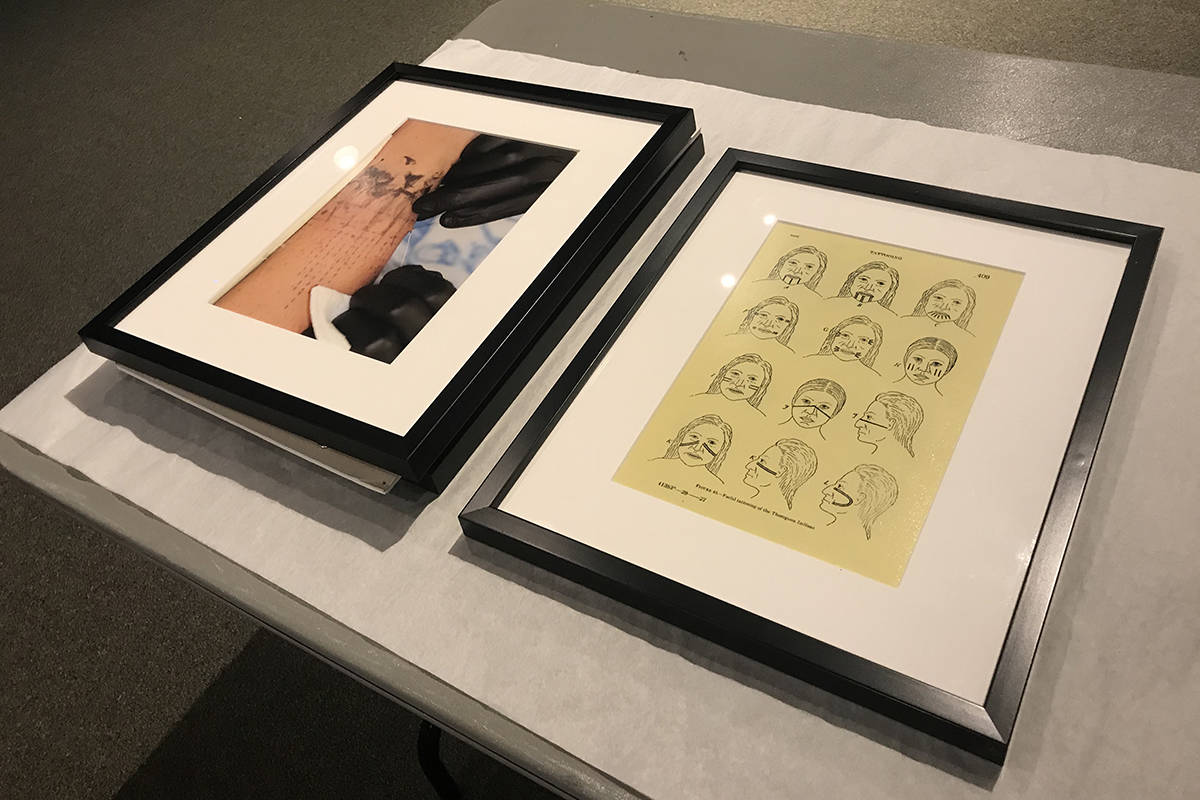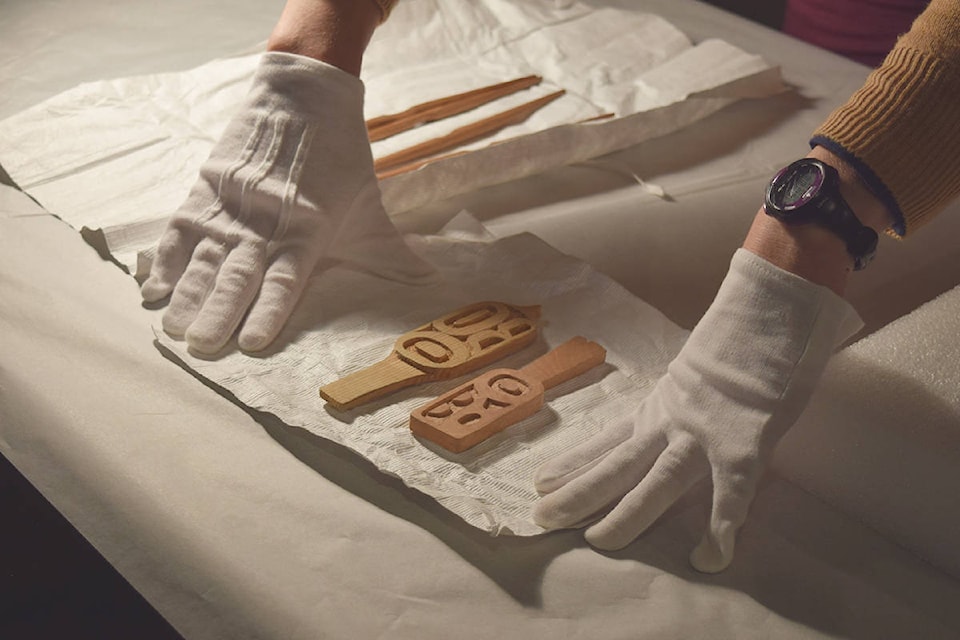A new exhibit at the Alberni Valley Museum explores how Indigenous artists are working to reclaim the traditional art of tattooing.
Since ancient times, both men and women on the coast marked their clan crests and symbols of personal identity onto their skin. Tattoos were a celebration and recognition of special life events, potlatches and social rank.
Tattooing fell out of practice after 1885, when the federal government banned potlatches and other spiritual ceremonies. The ban lasted until 1951, and the display of personal crest designs was transferred to clothing and jewelry.
Today, the tradition is re-emerging.
Body Language: Reawakening Cultural Tattooing of the Northwest is a travelling museum exhibit that explores the rich history and artistry of Indigenous tattooing on the Northwest Coast. The exhibit has now opened at the Alberni Valley Museum.
“The museum has a history of travelling exhibits,” explained Shelley Harding, Alberni Valley Museum coordinator. “We’re always looking for interesting exhibitions that are coming up.”
READ MORE: The Alberni Valley Museum is full of cool artefacts; now you can own one
In the case of Body Language, the Bill Reid Gallery approached the AV Museum two years ago when the exhibit was still in development.
“It’s an interesting topic, something that we haven’t considered before,” said Harding. “This exhibit looks at both the current and historical aspects—the traditional aspects of body art in Northwest Coast Indigenous peoples and the current artists that are practicing body art today.”
Five contemporary Indigenous tattoo artists have their work featured in the exhibition: Corey Bulpitt (Haida), Dean Hunt (Heiltsuk), Dion Kaszas (Nlaka’pamux), Nahaan (Tlingit) and Nakkita Trimble (Nisga’a). The artists each explore traditional tattooing within their own cultures.
The exhibition also includes historical and contemporary photographs, as well as contemporary art related to tattooing designs. There are also a few artefacts on display, including traditional tattoo needles, stamps and nose rings.
Harding said the exhibit was timely considering the recent news about unmarked graves discovered on former residential school sites across the country. The exhibit gives people an opportunity to learn about some of the cultural practices that were taken away from Indigenous people by colonization.
READ MORE: Children lost to residential school honoured in Port Alberni on July 1
“It’s something different and unique that we haven’t explored before, but it’s a tradition that goes back a very long way,” said Harding.
The exhibit was previously hosted in Alberta. The AV Museum received it in June and had it set up for viewing by July. The temporary exhibit will be available to view at the Alberni Valley Museum until December 2021.
The Alberni Valley Museum is on Wallace Street, attached to the Echo Centre. It is open from Tuesday to Saturday, noon to 4 p.m.
elena.rardon@albernivalleynews.com
Like us on Facebook and follow us on Twitter

